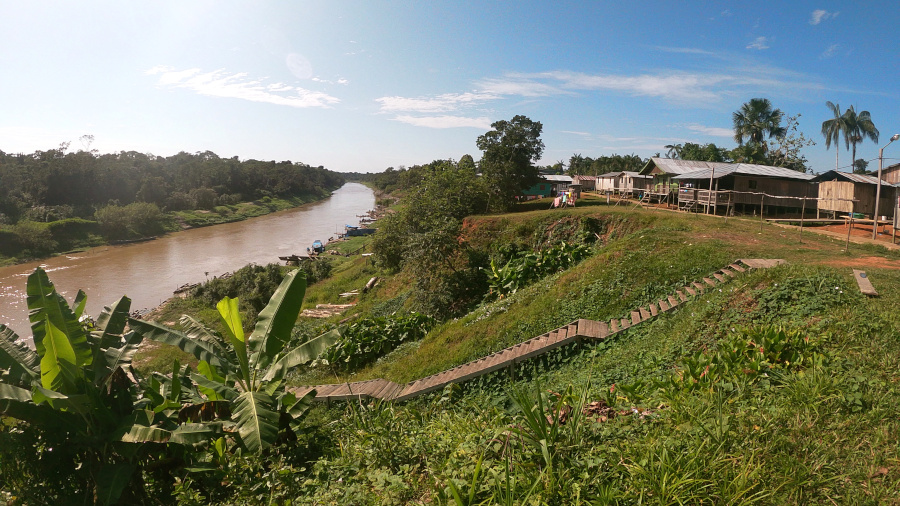A recent study conducted by the Universitat Autònoma de Barcelona (UAB) in collaboration with the University of Barcelona (UB) has detected worrying lead levels in the blood of 95% of the indigenous population of a remote region of the Amazon. The research suggests that lead-based ammunition used for subsistence hunting and water consumption could be important routes of exposure to the metal.

Researchers from the UAB and the UB are working with indigenous Amazonian communities to understand health issues from a holistic perspective, including people, wildlife and the ecosystem. "In recent years we have studied various viral and parasitic pathogens, such as malaria and Chagas, in Amazonian communities", explains Pedro Mayor, principal coordinator of the research and lecturer in the Department of Animal Health and Anatomy at the UAB. "On this occasion we have focused on the issue of lead, as recent studies suggest that the ammunition used by Amazonian communities for subsistence hunting could be an important route of lead exposure for indigenous peoples in the rainforest."
Lead is a highly persistent and widely distributed toxic metal on a global scale. It accumulates in the food chain and can affect several vital organs. In children, it limits neuronal development, while in adults it causes liver damage, as well as cardiovascular and fertility problems. The study analysed lead levels in humans, wild animals and fish, as well as its possible sources—including river water used for drinking and cooking, surrounding soils, and lead ammunition used in subsistence hunting—in a very remote indigenous region in the northeastern Peruvian Amazon, an environment of intact and well-preserved forests.
The study identified the main routes of lead exposure in this community. The results show that river water—used daily for drinking and cooking—and ammunition used in subsistence hunting are the two main sources of contamination. The average blood lead concentrations were 11.74 micrograms per deciliter. Although there is no safe level of lead exposure, levels above 5 micrograms per deciliter are already associated with adverse health effects. In the indigenous community studied, 95.8% of children under 12 years of age and 94.5% of adults exceeded this threshold, reflecting widespread population exposure to lead and a worrying health risk situation.
In addition, high concentrations of lead were detected in wild animals and in the river water used as a source of drinking water. In wild animals, concentrations reached up to 1.7 mg/kg of lead in liver, well above the limit of 0.1 mg/kg permitted in meat for human consumption according to European legislation. A total of 99% of wild animal samples exceeded the legal maximum permitted in meat for direct consumption.
"We have observed that the main sources of lead for humans are river water, which the indigenous population uses for drinking and cooking, as well as the ammunition they use to carry out subsistence hunting. Fish and wildlife transport lead from the water, and this fauna also acts as a transporter of lead from ammunition", warns Pedro Mayor. "This threat that affects human populations is also important for the health of wildlife and the ecosystem in general, since lead bioaccumulates and biomagnifies throughout the food chain. Furthermore, this problem transcends the Amazon forest, since in all tropical forests on the planet the main tool used by subsistence hunters is a shotgun with lead-based ammunition". Martí Orta, co-author of the article and researcher in the Department of Evolutionary Biology, Ecology and Environmental Sciences of the Faculty of Biology and the Biodiversity Research Institute (IRBio) of the University of Barcelona, points out that "the problem of lead goes beyond the Amazon and could have global implications for the health of indigenous populations, since currently shotguns and lead-based ammunition are the main tools used by communities that hunt and consume bushmeat as a means of subsistence".
Traditionally, lead pollution is associated with industrialised environments and with mining and waste recycling activities. Researchers warn that the evidence of high levels of lead in remote and non-industrialised areas demonstrates the urgency of implementing regional policies to prevent exposure to this metal through effective drinking water filtration systems and the use of non-toxic, lead-free ammunition.
Reference:
Mayor, P.; Rius-Taberner, G.; Ulloa, G.M.; Orta-Martínez, M. Unexpected High Blood Lead Levels in a Remote Indigenous Community in the Northeastern Peruvian Amazon. Toxics 2025, 13, 26. https://doi.org/10.3390/toxics13100826






